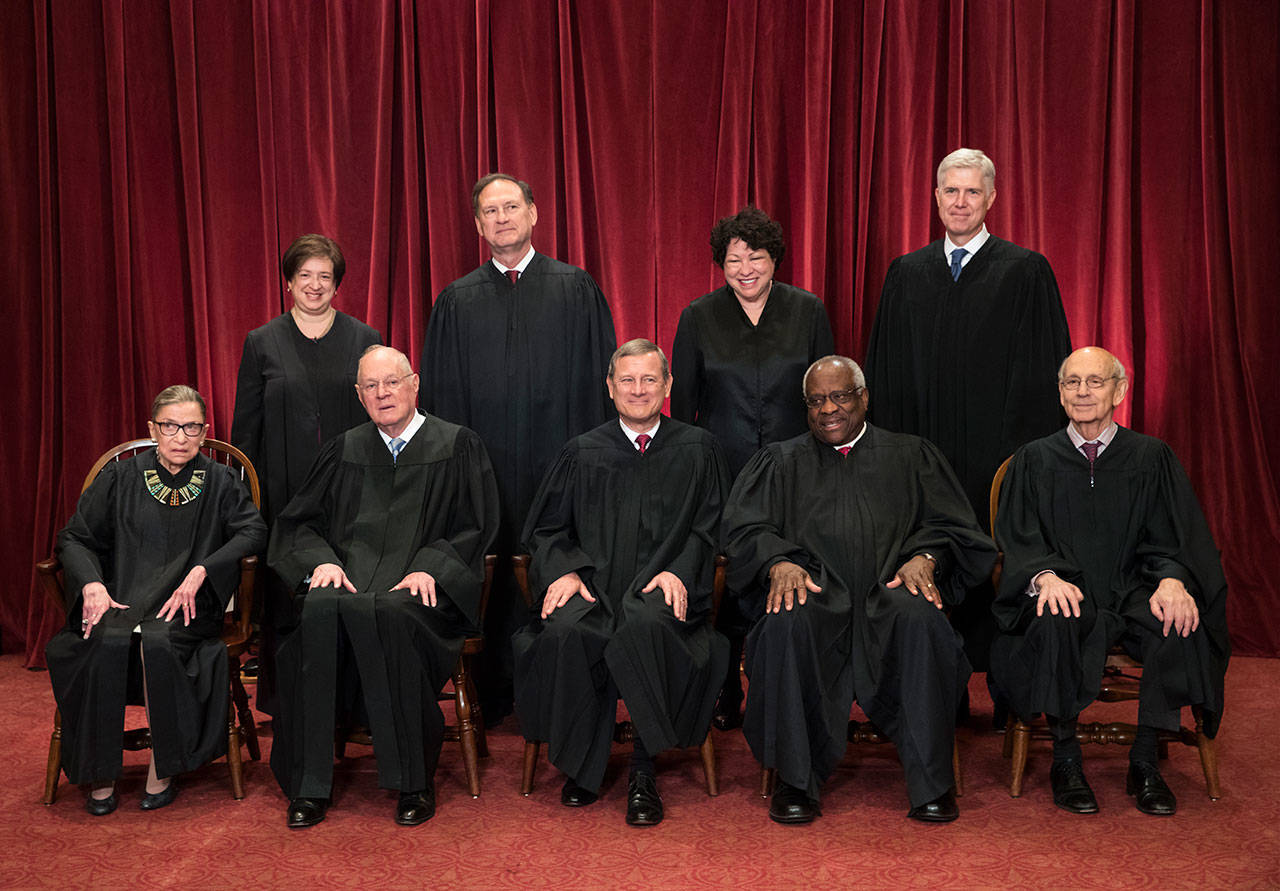By Sarah Turberville and Anthony Marcum
For The Washington Post
Justice Anthony Kennedy’s announcement Wednesday that he would be retiring from the Supreme Court led to justifiable hand-wringing about his crucial role as the swing vote in 5-4 decisions. But while 5-4 decisions — including the Tuesday blockbuster upholding President Trump’s travel ban — draw deserved attention, they obscure an important truth: The court values consensus, and justices agree far more often than they disagree.
The ratio is staggering. According to the Supreme Court Database, since 2000 a unanimous decision has been more likely than any other result — averaging 36 percent of all decisions. Even when the court did not reach a unanimous judgment, the justices often secured overwhelming majorities, with 7-2 or 8-1 judgments making up roughly 15 percent of decisions. The 5-4 decisions, by comparison, occurred in only 19 percent of cases.
And the court’s commitment to consensus does not appear to be slowing. In the 2016-17 term, 57 percent of decisions were unanimous, and judgments with slim majorities (5-3 or 5-4) accounted for just 14 percent. This term shows a similar trend. Surprisingly firm majorities issued some of the most anticipated decisions. In Masterpiece Cakeshop — the case concerning a baker’s refusal to bake a wedding cake for a same-sex couple — the court issued a rather narrow ruling on the substance, but it drew seven of the nine justices’ votes. In Gill v. Whitford, the court unanimously agreed that a group of Wisconsin voters did not have standing to challenge their state’s legislative map, and seven justices concurred that the voters could take their case back to district court and try again.
Even some closer cases were not split along the expected lines. In Carpenter v. U.S., Chief Justice John Roberts Jr. joined the more liberal justices to hold that the Fourth Amendment requires law enforcement to obtain a warrant before searching old cellphone records. And Justice Neil Gorsuch did the same when he joined the 5-4 decision in Sessions v. Dimaya, which held that a federal law that made deportation mandatory for a certain group of immigrants was unconstitutionally vague.
We should not be surprised that the court has sought greater consensus in recent years. During Roberts’s confirmation hearing in 2005, he noted that, as chief justice, he would have “a particular obligation to try to achieve consensus” with other members of the court. The next year, he similarly stated that “division should not be artificially suppressed, but the rule of law benefits from a broader agreement.” In 2016, he again remarked that the court has a “commitment” to “talking about things, talking them out,” which he concluded “sometimes brings you a bit closer together.”
This commitment to consensus is important. American law relies heavily on judicial precedent. A unified voice from the Supreme Court provides more clarity for both lower courts and the public on what the law is, instead of what it is believed to be. Further, judicial consensus builds institutional trust. A strong judicial majority demonstrates that the issue at hand was honestly considered, strongly deliberated and fairly decided. Legal doctrine developed over two centuries at the court also prevents it from wading into genuine political questions or hypothetical problems.
The commitment to consensus seems to have paid off in the court of public opinion. Today, two-thirds of Americans view the Supreme Court favorably — a higher percentage than for either Congress or the White House. The court also enjoys bipartisan appeal.
Nevertheless, many people — especially this term — have argued that the court’s commitment to consensus is unwarranted and that justices should be more willing to “pick a side.” But it is not the role of the Supreme Court to pick sides. The high court’s role is to interpret the law — nothing else. And lawyers, courts, and the public are better served when the court speaks with a clear and unified voice. Moreover, these critiques highlight the my-way-or-the-highway perspective that has led to indefinite congressional gridlock and increased public cynicism. In an age of tweet-storms and tantrums, the court’s ability to confer and often reach unanimity or a supermajority is a welcome change of pace. After all, imagine if the same criticism were levied against Congress: Congress agrees too much! More members should put their foot down and say no! How nonsensical does that sound?
Sarah Turberville is director of The Constitution Project at the Project on Government Oversight. Anthony Marcum is a research associate for the Governance Project at the R Street Institute.
Talk to us
> Give us your news tips.
> Send us a letter to the editor.
> More Herald contact information.

























